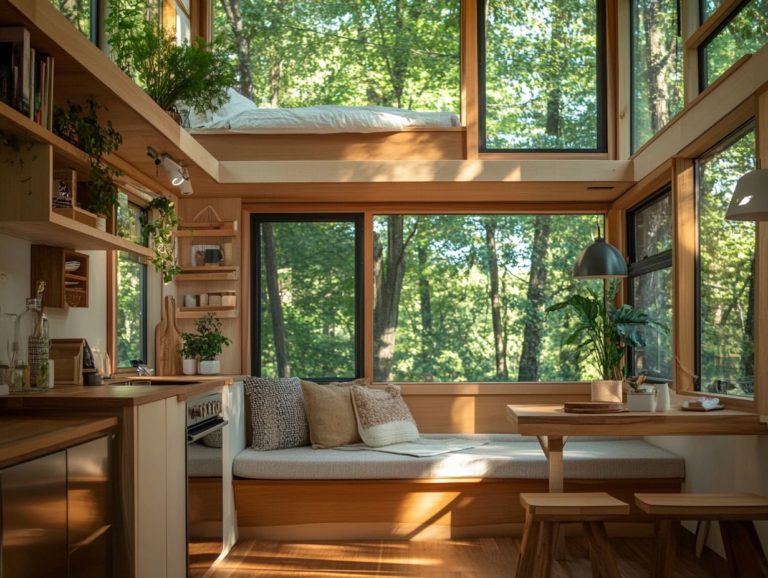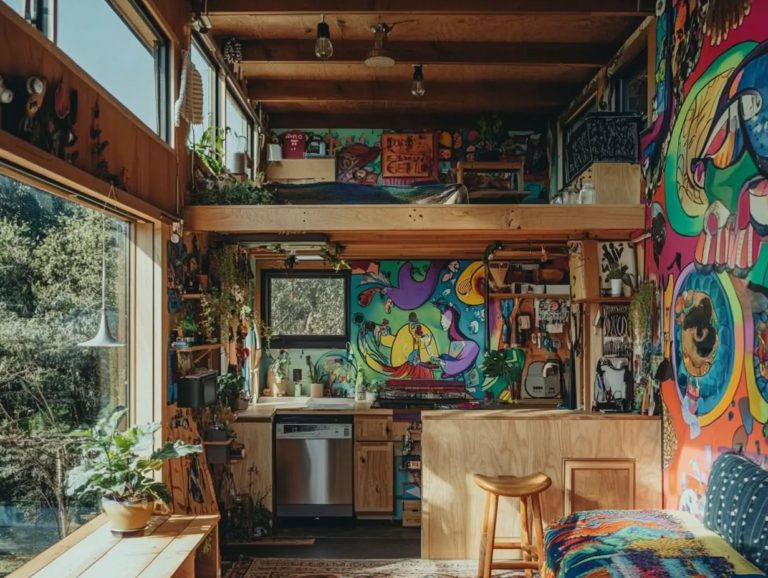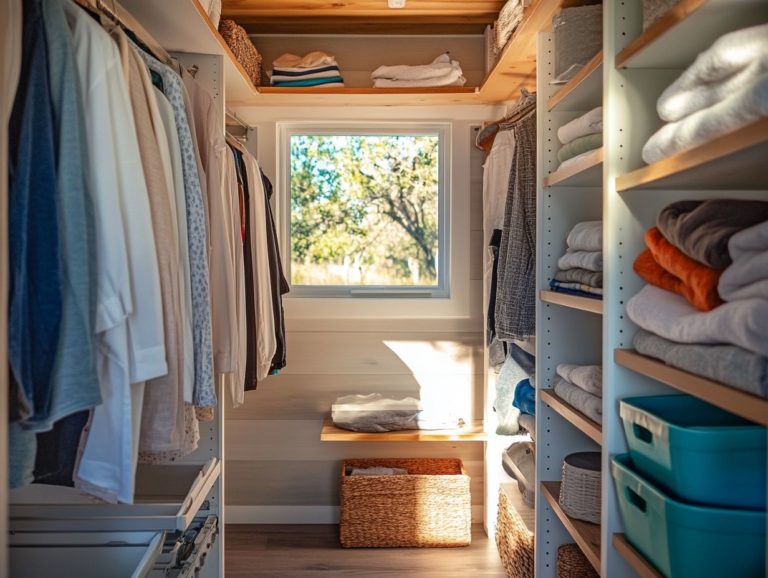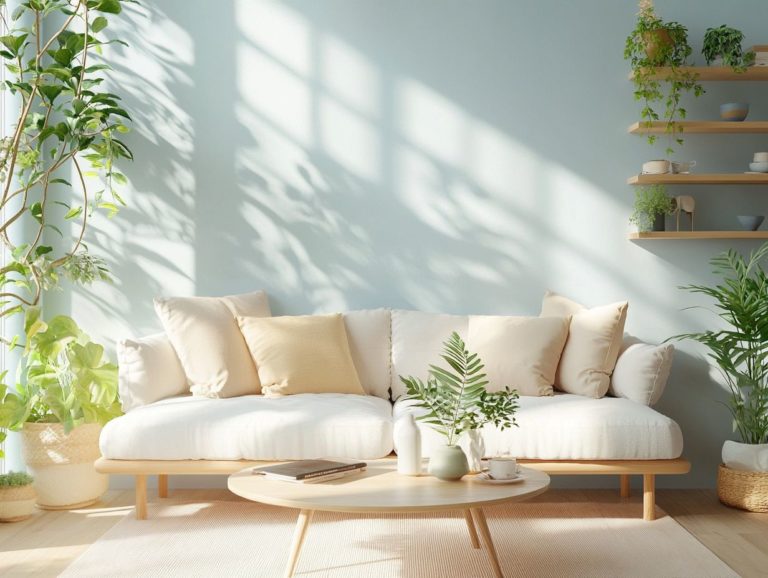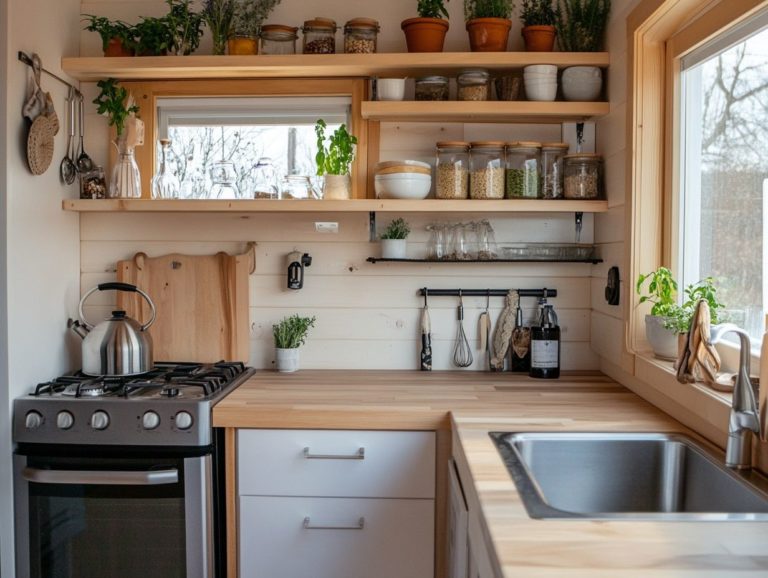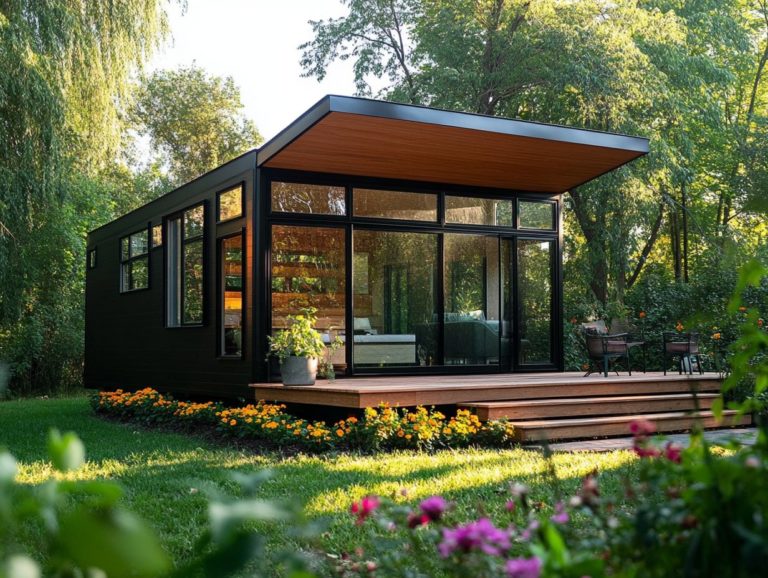5 Unique Tiny House Styles to Consider
Tiny houses have captured the imagination of those like you who crave a simpler, more sustainable lifestyle.
Whether you prefer minimalist designs or rustic cabins, there s a style that perfectly matches your taste and needs. This exploration delves into five unique tiny house styles, each brimming with distinct features and charm.
You ll also find insights into the rising popularity of tiny living, examining the benefits and challenges that accompany this lifestyle. From customization options to legal considerations, the discussion aims to dispel common misconceptions as well.
Prepare to uncover whether tiny living is your next grand adventure!
Contents [hide]
- Key Takeaways:
- 1. The Minimalist Tiny House
- 2. The Rustic Cabin
- 3. The Modern Tiny House
- 4. The Eco-Friendly Tiny House
- 5. The Converted Shipping Container
- What Makes Tiny Houses So Popular?
- Frequently Asked Questions
- 1. What are the 5 unique tiny house styles to consider?
- 2. What makes the tiny Victorian style stand out?
- 3. Can you describe the modern industrial tiny house style?
- 4. What are the key features of a rustic cabin tiny house?
- 5. How is the contemporary cottage different from a traditional cottage?
- 6. Why is the minimalist studio popular among tiny house enthusiasts?
Key Takeaways:
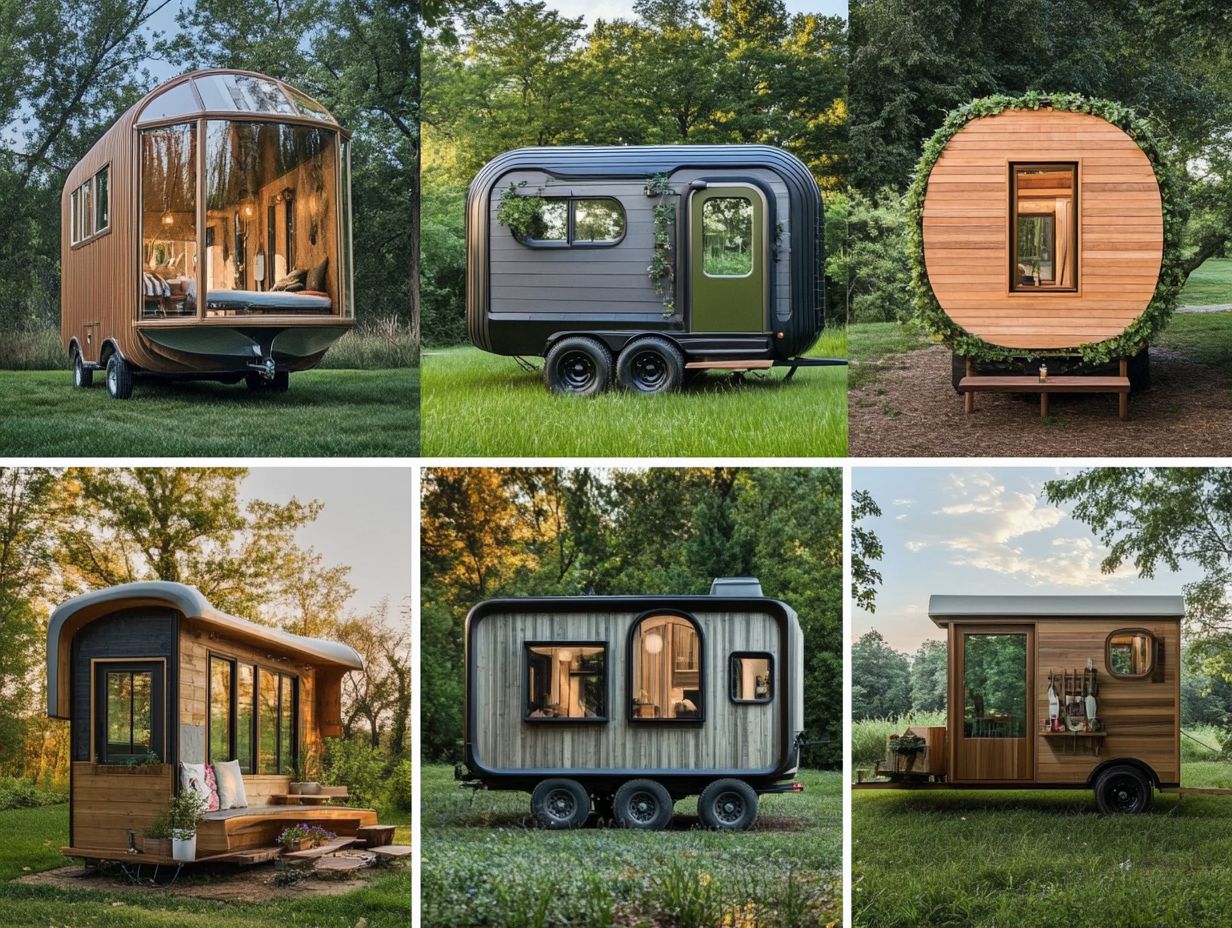
- Embrace a minimalist lifestyle with sleek tiny houses designed to maximize space and minimize clutter.
- Experience nature in rustic cabins that are perfect for cozy getaways.
- Stay stylish and efficient with modern tiny houses featuring contemporary designs and eco-friendly features.
1. The Minimalist Tiny House
The minimalist tiny house embodies the essence of compact living, offering a seamless fusion of functionality and aesthetic appeal. Every inch of your living space is maximized to create a cozy charm that aligns with your adventurous lifestyle.
By embracing innovative design principles and furniture that serves multiple purposes, these dwellings celebrate simplicity while inviting an abundance of natural light. This creates a tranquil atmosphere that encourages relaxation and sparks creativity.
These homes often boast beautiful design, with clean lines and open layouts that create the illusion of spaciousness. Space-saving solutions, like foldable tables and hidden storage, ensure every item has its rightful place.
Natural materials like wood and stone enhance the organic feel, while styles ranging from Scandinavian aesthetics to modern coastal touches bring warmth and elegance to your space.
These thoughtful design choices enrich your sensory experience and enhance the comfort you ll enjoy, allowing you to fully embrace a lifestyle that cherishes both simplicity and beauty.
2. The Rustic Cabin
A rustic cabin embodies the essence of cozy comfort and natural beauty, often featuring wooden accents and vintage decor that create a warm and inviting atmosphere ideal for anyone looking to escape the hustle and bustle of modern life.
These architectural gems typically use locally sourced timber, blending seamlessly with the surrounding landscapes and enhancing their bond with nature. With stone fireplaces and expansive, picturesque windows that welcome sunlight and showcase outdoor views, they offer a perfect harmony of indoor and outdoor living.
Many cabins today embrace eco-friendly principles, incorporating sustainable materials and energy-efficient designs that tread lightly on the environment. Features like green roofs and rainwater harvesting systems elevate their sustainability even further.
In these spaces, the benefits of outdoor living are effortlessly realized. Porches and terraces create a seamless connection between the interior and nature, allowing you to fully immerse yourself in the tranquility of your surroundings.
3. The Modern Tiny House
The modern tiny house transforms compact living by artfully merging contemporary design with sustainable practices. Picture sleek lines, energy-efficient appliances, and stunning interiors that elevate your living experience.
This innovative approach maximizes comfort in limited space while infusing your home with an aesthetic charm inspired by midcentury modern styles and the breezy essence of coastal living. Homeowners often integrate natural materials, neutral color palettes, and expansive windows, creating an atmosphere of openness and tranquility. If you’re considering this lifestyle, explore what are the most popular tiny house styles for inspiration.
By prioritizing eco-friendly design principles such as solar panels and rainwater harvesting systems, these compact homes embody a lifestyle that cherishes both beauty and sustainability. The thoughtful layout combined with chic decor ensures that tiny houses not only function efficiently but also reflect your individuality and creativity. To enhance this further, consider exploring 5 ways to incorporate art in tiny house design.
4. The Eco-Friendly Tiny House
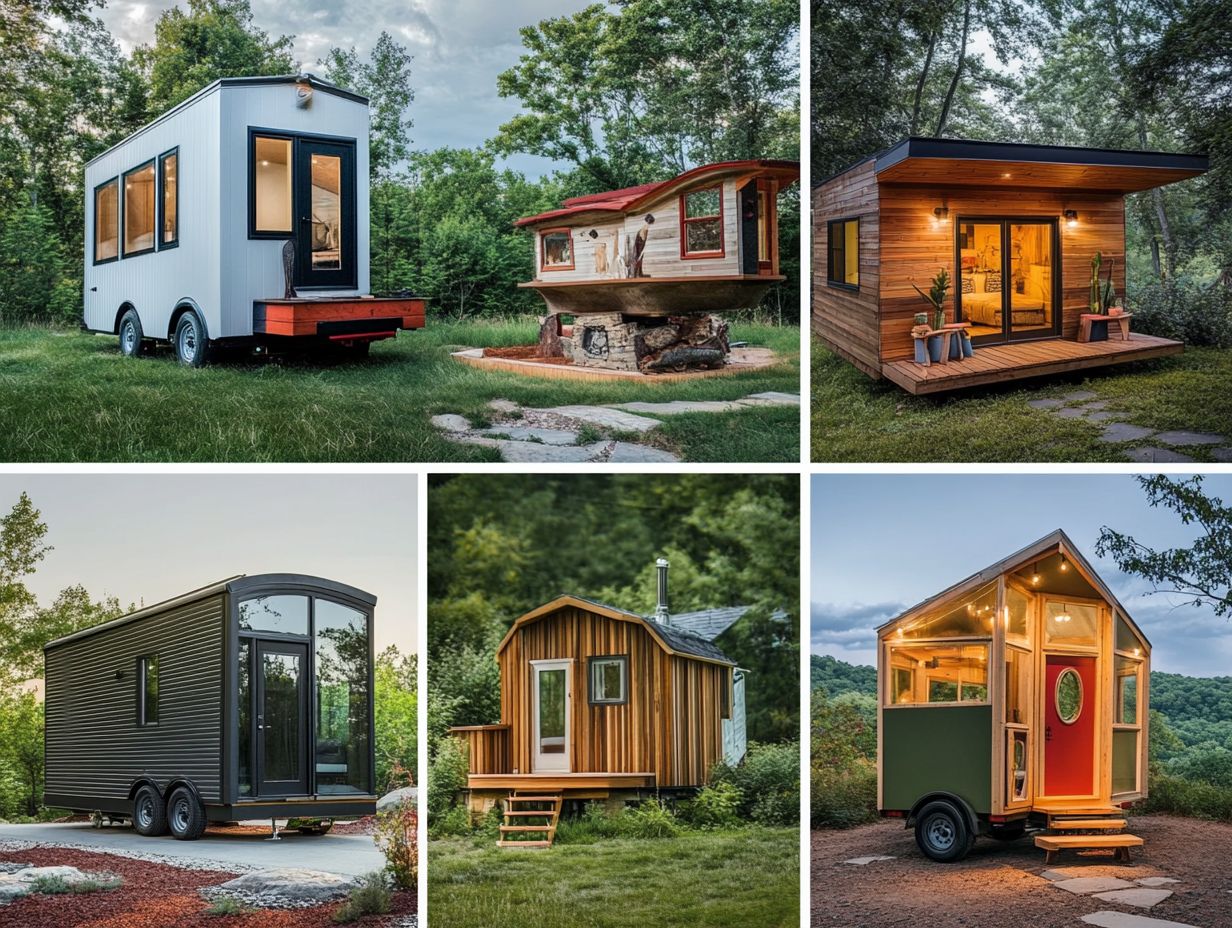
The eco-friendly tiny house stands as a remarkable example of sustainable design. It utilizes natural materials and innovative space management to minimize environmental impact while maximizing your comfort and functionality.
Beyond its thoughtfully planned layout, this dwelling often features systems like rainwater harvesting. This system collects and stores water for various needs, fostering a independent living environment. Solar panels capture the sun s energy, reducing reliance on traditional power sources. Additionally, composting toilets are an eco-friendly alternative, breaking down waste naturally to support a greener lifestyle.
Engaging in DIY tiny home projects deepens your personal connection to your home. It also sparks creativity in sustainable practices. This hands-on approach enriches your living experience, as each carefully crafted element reflects your values and vision for a greener future.
5. The Converted Shipping Container
Converted shipping containers have become a sought-after option for tiny living. They offer an industrial aesthetic paired with space-saving solutions that foster creative storage and unique decor possibilities.
Discover how these innovative homes transform repurposed materials into stunning living spaces! They not only harness versatility but also provide an eco-friendly alternative to conventional housing. The sturdy structure of containers delivers exceptional insulation and durability, helping you manage energy costs across various climates.
However, challenges like zoning regulations can arise, demanding careful planning on your part. By applying design principles that emphasize natural light, open spaces, and multifunctional furniture, you can enhance both comfort and practicality.
With thoughtful interior design, you can transform a simple container into a stylish sanctuary that reflects your personal taste while remaining highly functional.
What Makes Tiny Houses So Popular?
Tiny houses have surged in popularity, appealing to those like you who crave an adventurous lifestyle and minimalist design. Embrace simplicity and adventure with tiny living!
This trend resonates with individuals seeking to trim down living expenses and break free from the shackles of consumerism. After all, these compact dwellings often lead to significantly lower utility bills and maintenance costs.
Rising concerns about environmental sustainability have also played a role. Many are opting for tiny homes to reduce their carbon footprints. The variety of designs available, including architectural styles for tiny homes, caters to your personal style, whether you lean towards rustic charm or a sleek modern aesthetic. It’s a delightful blend of practicality and personal expression that continues to draw in a diverse array of enthusiasts like yourself.
What Are the Benefits of Living in a Tiny House?
- Financial freedom
- A reduced environmental footprint
- The chance to embrace a minimalist lifestyle that cultivates simplicity and intentionality in your daily life
Living in a tiny house significantly cuts down on utility costs. This allows you to direct your resources toward enriching experiences rather than accumulating excessive belongings.
With less physical clutter, your space transforms into a serene haven that nurtures creativity and relaxation. This streamlined way of living encourages you to explore the outdoors more. You’ll likely find yourself spending more time in nature.
By opting to downsize, you can open the door to a richer life brimming with travel adventures and meaningful journeys. Discover new places without the weight of a larger space to maintain.
What Are the Challenges of Owning a Tiny House?
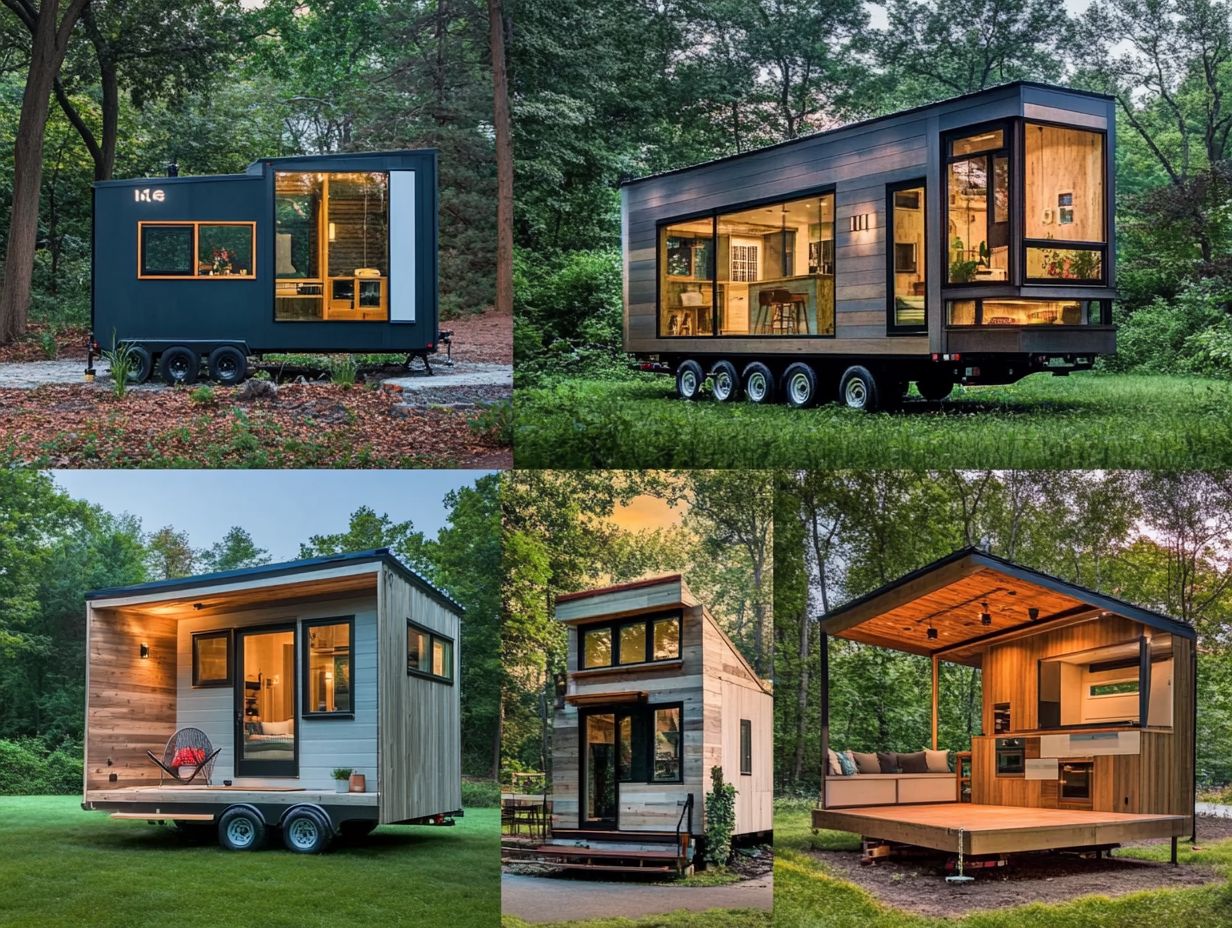
Owning a tiny house comes with many advantages, but it also brings challenges, including space constraints, legal considerations, and the need for thoughtful customization to suit your unique needs.
Navigating common issues like zoning laws and building codes can feel overwhelming, especially if you’re drawn to this lifestyle. Many areas have strict rules about where you can put your house and how it should be built, which can lead to considerable frustration.
Practical concerns arise as well, such as finding efficient storage solutions and arranging living spaces to maximize comfort and functionality. However, with careful planning and diligent research, you can conquer these challenges with smart planning!
Seeking guidance from local authorities and dedicating time to understand your specific living space can transform your tiny living experience. Additionally, exploring 7 ways to personalize your tiny house ensures that your new home not only meets your desires but also complies with legal requirements, paving the way for a more fulfilling lifestyle.
How Can One Customize Their Tiny House to Fit Their Needs?
Customizing a tiny house to meet your personal needs is essential for maximizing comfort and functionality. It allows you to express your unique taste through thoughtful design choices and innovative storage solutions.
Among the myriad options available, multifunctional furniture emerges as an exceptional solution, providing versatility without sacrificing space. You can creatively incorporate furniture pieces that serve as storage units or transform into guest beds, ensuring that every square foot counts.
Unique decor elements, such as handcrafted art or vintage treasures, enrich your living space with character. Personalized layout designs improve the flow of your daily activities. Striking the right balance between aesthetics and practicality is key; a beautifully curated space should seamlessly cater to your everyday needs, ensuring that comfort and style coexist in perfect harmony.
What Are the Legal Considerations for Owning a Tiny House?
When you consider owning a tiny house, grasping the legal landscape think zoning laws, building codes, and property ownership regulations is essential. This knowledge ensures compliance and helps you avoid potential pitfalls along the way.
These regulations can vary widely from one region to another, which makes thorough research into local laws a must for anyone contemplating this lifestyle. Different towns and counties may enforce unique ordinances that either help or obstruct tiny house living. Additionally, you can explore 5 ways to reflect your personality in a tiny house to make your space uniquely yours.
If you plan to go off-grid, you ll need to deal with not just building codes but also guidelines surrounding water usage, sewage disposal, and energy sources. Ignoring these regulations can lead to significant fines or even eviction.
Thus, developing a solid understanding of your local legal framework gives you the power to strategize effectively and mitigate any legal challenges that could emerge during your tiny house journey.
What Are the Common Misconceptions About Tiny Houses?
Common misconceptions about tiny houses often suggest that they lack adequate living space and comfort. In truth, a well-designed tiny home can offer an inviting charm and practical functionality, all while enhancing your quality of life.
The belief that tiny living is exclusively for those in financial straits overlooks the broader allure of this lifestyle. Many individuals and families are drawn to the simplicity and sustainability that tiny homes promote, enabling them to live more intentionally and foster a deeper connection with their environment. For those looking to maximize their space, exploring 7 ways to create a multi-functional tiny home can be invaluable.
Rather than feeling cramped, you’ll find that many tiny homes feature innovative storage solutions and multi-functional spaces, enhancing both comfort and aesthetic appeal. This unique approach to living cultivates richer experiences, encourages community building, invites outdoor adventures, and nurtures a decluttered mindset. For those looking to elevate their space, consider exploring 5 ways to personalize your tiny house design.
Frequently Asked Questions
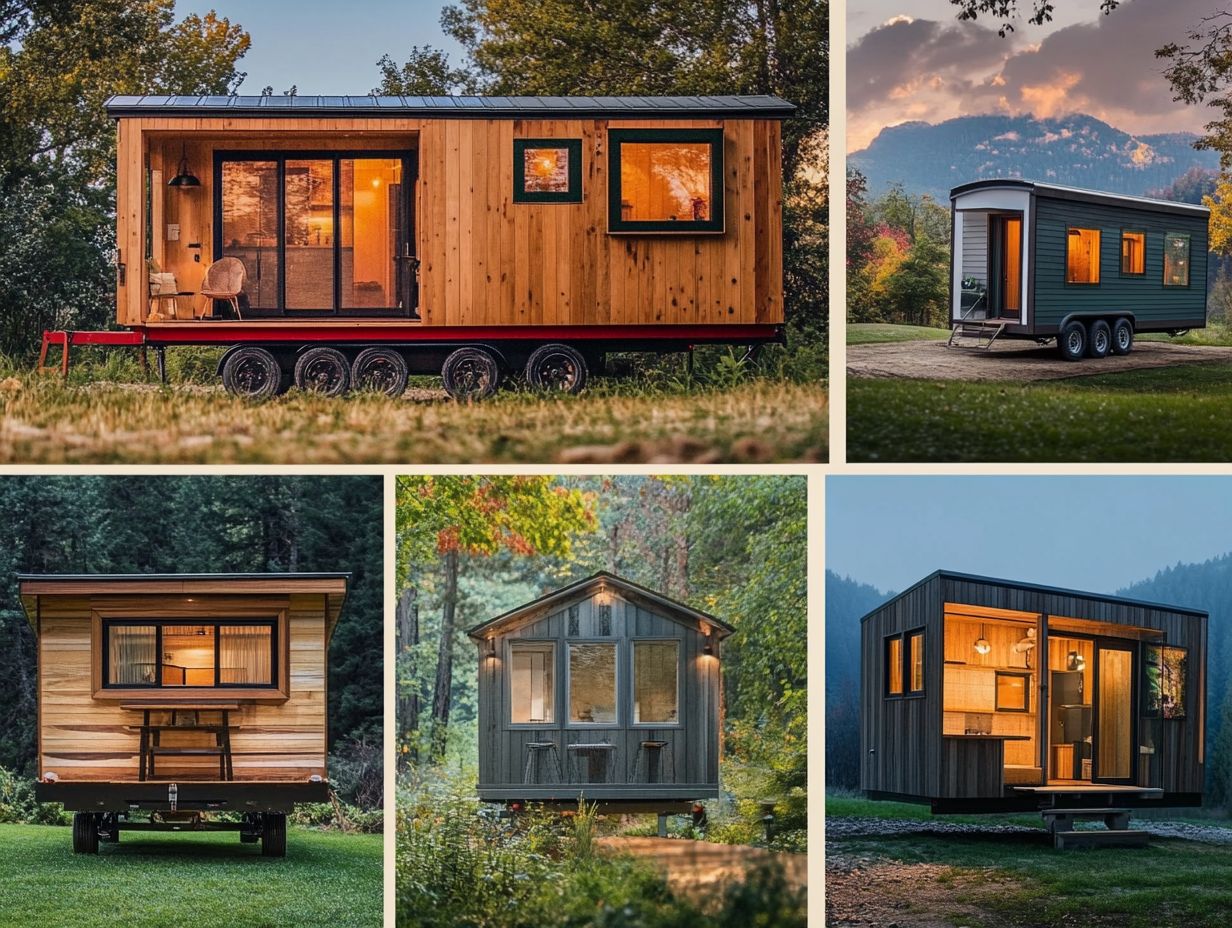
If you have any tips or stories about tiny house living, please share them in the comments!
1. What are the 5 unique tiny house styles to consider?
Consider these five tiny house styles: tiny Victorian, modern industrial, rustic cabin, contemporary cottage, and minimalist studio.
2. What makes the tiny Victorian style stand out?
The tiny Victorian style features intricate trimmings and colorful exteriors.
Its charming details give it an elegant look.
3. Can you describe the modern industrial tiny house style?
This style blends raw materials like metal and concrete with sleek designs.
The result? A unique, edgy look.
4. What are the key features of a rustic cabin tiny house?
A rustic cabin offers a cozy atmosphere.
Expect natural wood accents and a traditional fireplace that blends with nature.
5. How is the contemporary cottage different from a traditional cottage?
The contemporary cottage keeps the charm of traditional designs.
It adds a modern twist with open floor plans.
6. Why is the minimalist studio popular among tiny house enthusiasts?
The minimalist studio prioritizes function and simplicity.
It’s ideal for those who want to live efficiently and clutter-free.

